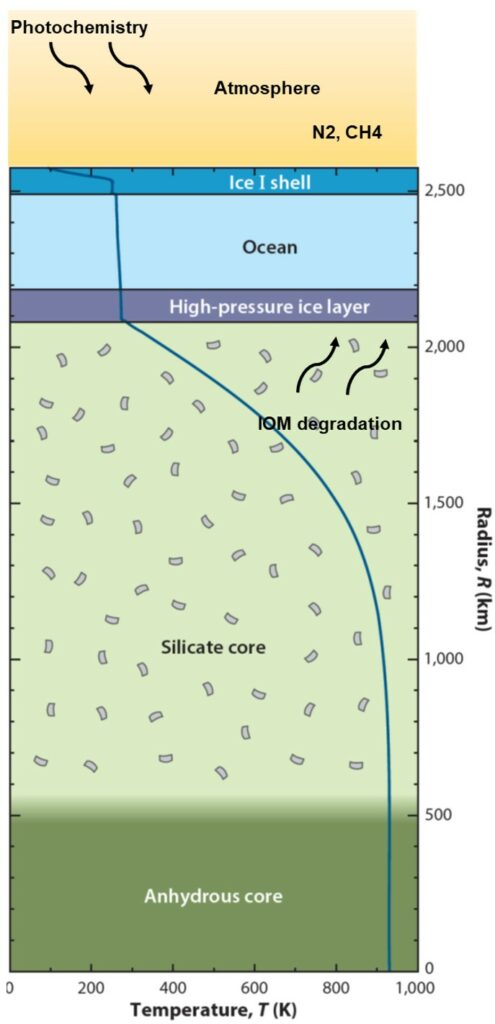
Titan, Saturn’s largest moon, is the only moon in the solar system with a dense atmosphere where photochemistry in the upper atmosphere produces an organic haze falling on the surface. It is also the only bodies, besides Earth, with lakes and seas on its surface. The Cassini mission demonstrated that it also has a deep water ocean beneath an icy crust several 10s of km thick. It is differentiated into a refractory core and a hydrosphere. In the core, degradation of organics during the thermal evolution could release volatiles late in Titan’s history.
The goal of this project is to investigate whether the upward flux from the rocky core to the ocean and the downward flux from the surface to the ocean provide the necessary chemical disequilibria and energy to fuel extant microbial biospheres in Titan’s ocean.
Titan was explored by the NASA/ESA Cassini/Huygens mission during the period 2004-2017. The NASA mission Dragonfly, a 8-bladed rotorcraft slated for launch in 2027, will explore its surface during the period 2034-2037.

